2012 Capstone Celebration Symposium
PLU Chemistry Department
April 30th to May 4th, 2012
Join the Chemistry Department to hear the senior capstone presentations. Student presentations will occur Monday through Friday. The schedule of talks with more details is given below.
[ Monday | Tuesday | Wednesday | Thursday | Friday ]
Morken Center, Room 103
Monday, April 30th, 2012 (Morken Room 103)
12:30 pm - Light lunch
1:00 pm - Welcome
1:10 pm - Beware UV light! Quantifying Oxidative DNA Damage in Saccharomyces cerevisiae
Sukhbir Randhawa, Senior Capstone Seminar
Many different factors cause DNA damage in cells. UV radiation is one of the major factors; if a cell’s DNA repair system does not keep repairing the damage, lethal mutations may result. Research that specializes in mutagenesis thus concentrates on the roles of UVA rays in incurring oxidative DNA damage in Saccharomyces cerevisiae. Our research focused on discovering the best method available to the Saxowsky Research Laboratory at PLU to quantify oxidative DNA damage induced in Saccharomyces cerevisiae. The DNA was isolated, digested with formamidopyrimidine glycosylase (FPG), and run on an alkaline gel. Results were inconclusive, however, potential pitfalls are addressed.

1:50 pm - Effects of Ligands on CdSe Nanocrystal and Nanobelt Phospholuminescence
Rachel Smith, Senior Capstone Seminar
Nanocrystals are studied due to their size-tunable optical and electronic properties resulting in their potential for use in a number of applications. Molecules called ligands bind to the surface of nanocrystals during their synthesis. Previous studies have demonstrated that these ligands can be exchanged, resulting in an alteration of nanocrystal characteristics—one of which being photoluminescence (PL) intensity. We synthesized both colloidal CdSe nanocrystals and nanobelts then exchanged their surface ligands with pyridine and dimethylaminopyridine (DMAP). This enabled us to look at whether ligands have similar effects on nanocrystal PL regardless of the shape. Since each shape is caused by growth along different axes, the surface chemistry of nanobelts and nanocrystals vary. Because of this difference, we hypothesized that a given ligand may interact with nanocrystals of each shape differently. We find that both pyridine and DMAP completely quench spherical nanocrystal PL, but that pyridine does not affect nanobelt PL.

2:30 pm - Fabricating Porous Nanoarchitectures for Energy Storage
Morgan Ostendorf, Senior Capstone Seminar
It was hypothesized that ordered and disordered pore geometries store identical amounts of electrochemical double-layer capacitance (EDLCs) if everything except pore geometry is the same. To prove that ordered porosity does not affect the magnitude of discharged capacitance, inverse opals and carbon nanofoams were used to make the comparison. Inverse opals have ordered pores and start out as poly(methyl methacrylate) (PMMA) spheres suspended in water. The PMMA spheres are then assembled in carbon fiber paper through gradual evaporation and then the paper is annealed to help the spheres stay in the paper. The sphere-filled carbon fiber paper is filled with resorcinol formaldehyde as an intermediate, pressure cooked and then pyrolized. Carbon nanofoams, on the other hand, have disordered pores and are made by filling a piece of carbon fiber paper with resorcinol formaldehyde. The paper is then pressure cooked and pyrolized. While there is still some more work to do, we have successfully improved the PMMA product, created inverse opal papers and nanofoams, as well as started to collect cyclic voltammetry measurements and impedance data to test our hypothesis.
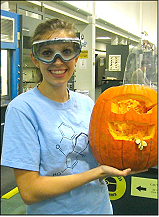
3:20 pm - N-hydroxyureas: a Green and Convenient Synthesis Using S,S'-dimethyldithiocarbamate
Erik Reierson, Senior Capstone Seminar
Hydroxyureas have potential uses as more selective treatments for sickle cell anemia and cancer. A facile, high-yielding route to N-alkyl-N’-hydroxyureas has been optimized from the air- and water-stable phosgene synthetic equivalent S,S’-dimethyldithiocarbonate (DMDTC). First, N-alkyl-S-methylthiocarbamates were synthesized from primary alkyl amines by a method modified from Fochi, et al. The amines were added as neat liquids to a suspension of DMDTC on water at 0 oC and then stirred at 23 oC for 1-5 h. The desired products were furnished in 64-99% from unbranched and a- or b-monobranched amines. From the N-alkyl-S-methylthiocarbamates, the synthesis of their corresponding N-alkyl-N’- hydroxyureas was achieved by gently heating them to 60 oC for 18-24 h in a mixture of tert-butanol and aqueous hydroxylamine. The N-alkyl-N’-hydroxyurea products (70-98%) were obtained in high purity after simple concentration under vacuum to remove the volatile solvents and methyl mercaptan– a distinct advantage over previously reported methods utilizing N-alkyl-O-phenylcarbamates.
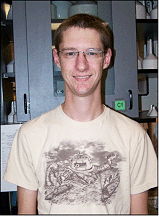
1:50 pm - The Relationship Between Conductivity and Discharge Capacitance on Periodic Porous Carbon Nanoarchitectures
Sally Osborn, Senior Capstone Seminar
Three dimensional (3D) nanoarchitectures are an adaptable stage for the development of electrochemical capacitors. These nanoarchitectures function to provide a rapid and effective transference of ions through a unified network.1 Our research focuses on the comparison between two periodic carbon nanoarchitectures, a carbon inverse opal monolith (CIOM) and a carbon inverse opal paper (CIOP). We hypothesize that if CIOPs is two orders of magnitude more electronically conductive than CIOMs, then CIOPs should discharge greater capacitance at higher current densities. Both porous carbon electrodes were constructed with a template comprised of 250 nm size poly(methylmethacrylate) (PMMA) spheres. The CIOMs are formed by infiltrating pieces of evaporated PMMA templates with resorcinol formaldehyde (RF) resin, and then subsequently pyrolyzing these samples into porous carbon monoliths. The CIOPs have similar pore structures as CIOMs, but are formed from PMMA templates that are embedded between fibers in conductive carbon fiber paper (CFP). The PMMA colloidal crystals are deposited amongst the CFP framework and infiltrated with the same RF resin and pyrolyzed. A series of electrochemical measurements were used to quantitatively characterize both of the electrodes. Average thickness of the CIOPs was 91 ± 1.62 μm and the average thickness of the CIOMs were 2107 ± 3301 μm. Average capacitance of CIOPs at a scan rate of 1 mV/s was 16 ± 1 F/g and the average capacitance of the CIOMs at a scan rate of 1 mV/s was 14 ± 3 F/g. The average surface area of the CIOPs and CIOMs were similar, but not identical (161 ± 10 m2/g vs. 141 ± 10 m2/g, respectively). Both materials have similar electronic conductivities (CIOPs: 33 ± 2 S/cm; CIOMs 0.22 S/cm11).
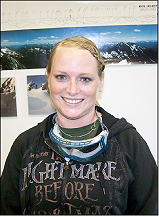
2:30 pm - Retromutagenesis in Saccharomyces cerevisiae and the Effects of Inducing DNA Damage Through UVA Radiation
Kaylena Brevick, Senior Capstone Seminar
The ultimate goal of this research is to investigate retromutagenesis as a potential way of acquiring mutations, which can lead to drug resistance and diseases. Retromutagenesis starts with transcriptional mutagenesis (TM) when DNA damage is transcribed and creates a mutant protein. If the damage is not repaired before replication it can result in the generation of a permanent mutation in all of the future daughter cells, completing retromutagenesis. This research explored retromutagenesis using the CAN1 gene of non-dividing Saccharomyces cerevisiae as a model system. The colonies that were observed on growth-arresting media after the normal grown period were considered to be due to replicational mutagenesis when the cells were still dividing, but the later colonies were considered to gain mutations after the cells were living on the selective media, suggesting transcriptional mutagenesis. The mutation rate for retromutagenesis of wild type (WT) cells was found to be 7.3131E-08 with low and high confidence limits of 4.7331E-08 and 1.0794E-07 respectively, nearly four-fold lower than the rate for replicational mutagenesis (1.835E-07 with low and high confidence limits from 1.564E-07 to 2.549E-07.) We hypothesized that increased levels of oxidative DNA damage would increase the mutation rate due to transcriptional mutagenesis. To test this hypothesis, we exposed yeast cells to long wavelength UV light to induce oxidative lesions. To date, our results are inconclusive, as conditions for UV exposure need to be optimized.

3:20 pm - Protecting Groups for the Synthesis of N-hydroxyureas and N,N'-dihydroxyurease
Melrose Mailig, Senior Capstone Seminar
Hydroxyurea has been used in medical practice for treating diseases such as melanoma, leukemia and sickle cell anemia. One new approach to synthesizing hydroxyureas is to introduce a protecting group on the reactive hydroxyl group of the hydroxyurea functional group. Protected hydroxylamines were used to produce carbamates, which in turn react with amines to produce the protected N-hydroxyureas and N,N’-dihydroxyureas. The two protecting groups that were investigated in this study were tert-butyldiphenylsilyl and 2-nitrobenzyl ethers. O-(tert-butyldiphenylsilyl) hydroxylalmine was made with a good yield of 49%, but reaction with S,S-dimethyl dithiocarbamate to produce the desired hydroxyurea was unsuccessful. O-(2-Nitrobenzyl) hydroxylamine was made with a good yield of 67% and has proven to be a successful strategy for the synthesis of protected hydroxyureas.

4:00 pm - FeS2 and Cu2S Quantum Dots in Photovoltaic Devices
Ashley Marshall, Senior Capstone Seminar
Iron pyrite (FeS2) nanocrystals show promise as a non-toxic, earth abundant semiconducting material for photovoltaic (PV) applications. The FeS2 nanocrystals were tested for functionality as an electron accepting material in FeS2:P3HT (poly(3-hexylthiophene)) PV devices. The synthetic conditions for the FeS2 nanocrystals were optimized to improve product yield as well as particle size and monodispersity; the nanocrystals were characterized by optical measurements and TEM. PV device design and fabrication were explored for novel bilayer and bulk heterojunction (BHJ) designs containing FeS2. Photoinduced absorption spectroscopy was conducted to screen for charge-transfer in BHJ blends and bi-layer films. We successfully synthesized FeS2 nanocrystals, while photoinduced absorption spectroscopy showed no charge-transfer in the BHJ films. Complete bi-layer PV devices were tested using copper (I) sulfide and zinc oxide nanocrystals, but showed poor rectification.
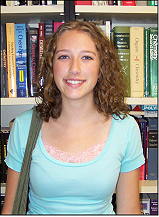
1:10 pm - The Effect of Pore Geometry on 3D Porous Carbon Nanoarchitecture Capacitance
Rebekah Blakney, Senior Capstone Seminar
Ordered and disordered Carbon nanomaterials with equivalent physical and electrochemical properties were fabricated to determine if pore geometry effects their capacitance. This subsequently determines their ability to act as electrodes for electrochemical capacitors. Carbon inverse opal papers were produced to represent ordered pores and carbon nanofoams were fabricated to have disordered sponge-like pore geometries. These materials were chosen to be as similar as possible in order to make the best capacitance comparison. Scanning Electron Microscopy (SEM) confirmed ordered pore geometries with 250 ± 50 nm pore diameter for papers and disordered pore geometries with 50-300 nm pores for nanofoams. Electrochemical measurements determined that both carbon nanomaterials have similar electronic conductivities and surface areas, confirming that pore geometry was the significant variable between them. Nanofoams have electronic conductivities of 34.9 ± 0.6 S/cm and 176 ± 53 m2/g. Papers have conductivities of 33 ± 2 S/cm and 218 ± 95 m2/g of surface area. Further work is needed to conclusively determine if pore geometry is significant to capacitance.
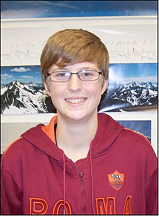
1:50 pm - The Role of DNA Repair in the Rate of Acquired Drug Resistance in Saccharomyces cerevisiae as a result of Transcriptional Mutagenesis
Nick Larkey, Senior Capstone Seminar
In looking for novel routes to drug resistance in non-dividing cells, we considered how oxidative DNA damage could confer a large downstream affect. In dividing cells, damage in the DNA can occur during replication which can confer a mutation in a process called replicational mutagenesis (RM). In non-dividing cells, this oxidative DNA damage can be bypassed by RNA polymerase and create a pool of mutant transcripts in a process called transcriptional mutagenesis (TM). Both RM and TM can lead to retromutagenesis, or an incorporation of a mutation in the genome. These mutant transcripts can be translated into mutant proteins that can confer phenotypic changes to the cell. If these phenotypic changes allow the cell to re-enter the cell cycle, the damaged DNA may be replicated into mutated daughter DNA strands, creating a drug resistant organism. In this pathway, a cell whose growth is arrested by a drug can acquire drug resistance by a process initiated when replication was not occurring. When comparing rates of both replicational and transcriptional mutagenesis in both WT and repair deficient Saccharomyces cerevisiae, we found that the mutation rates for Δogg1 BER-deficient mutants were higher for both replicational (5x higher) and transcriptional mutagenesis (2x higher). This supports our hypothesis due to an increase of oxidative damage being proportional to the induced mutation rate increase. Some caveats of these results, as well as potential effects of media formulation on the mutation rates, will be discussed.
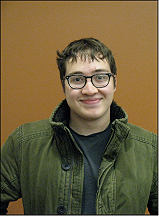
2:30 pm - The Effect of Morphology on Organic Solar Cell Efficiency for P3HT/C60 and P3HT/PCBM
Karyssa Allbritton, Senior Capstone Seminar
Organic solar cells are much cheaper to make than traditional solar cells, unfortunately the current organic solar cell efficiencies are not comparable to silicon solar cells. Current research is aiming to improve cell efficiency. We show that when comparing different architectures for the P3HT/ (C60, PCBM) system, bulk heterojunctions are more effective than planar morphologies, but the carbon nanotube design is ultimately more efficient than both previous structures. Additionally, thermal annealing has been shown to improve cell efficiency by causing slight mixing of materials at the interface.
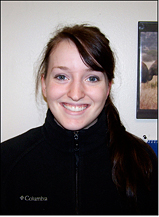
3:20 pm - Attempted synthesis of 1,3-Aryl Naphthalenes via Lewis-Acid Catalyzed Rearrangement
Jacob Huntington, Senior Capstone Seminar
Based on previous research on a Lewis-acid catalyzed rearrangement to form a substituted aryl naphthalene, our group attempted to produce a 1,3-aryl naphthalene. Starting from commercially available indanone, the key C-C phenylation was achieved via nucleophilic addition of phenyl-lithium. The attempted addition of acetyltrimethylsilane to create the –TMS leaving group instead caused a Brook rearrangement, preventing the desired effect. The lack of a proper leaving group combined with the conjugation of the molecule prevented the complete rearrangement into the aryl naphthalene, and instead left a novel benzofulvene motif.

1:50 pm - An Analysis and Comparison of Capacitor Qualities in Highly Ordered Porous Nanocarbon Electrodes
Ryan Clark, Senior Capstone Seminar
Carbon inverse opal monoliths(CIOMs) are highly ordered macroporous carbon electrodes and show potential in the fabrication of extremely small electrical components while maintain or exceeding the performance of traditional capacitors. However, the physical characteristics of CIOMs cause them to be very fragile and brittle. In 2011 Lytle, et al. published a method of templating carbon nanofoam into a backbone of highly flexible carbon fiber paper. These carbon nanofoam papers retained their ability to conduct both ions and charge. This templating method has been further explored by Lytle’s research team with the carbon inverse opal structure to make carbon inverse opal papers (CIOPs). A comparison between the CIOMs and CIOPs will be discussed.

2:30 pm - Pyrolysis of Biomass as a Source of Renewable Energy and Carbon Sequestration
Michael Yannello, Senior Capstone Seminar
As concerns over climate change increase, it is important to look for renewable sources of energy to replace current fossil fuel technologies. The pyrolysis of biomass to produce bioenergy and biochar may serve as a method for sequestering carbon while generating a source of renewable energy. Additional benefits of biochar may be its use as a soil amendment for agriculture, promotion of crop growth and reduction of greenhouse gas emissions from the soil has been observed.
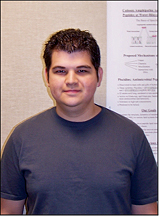
3:20 pm - Synthesis of Carbon Inverse Opal Paper: Conductive and Flexible Carbon Fiber Containing Ordered Porous Carbon Networks
Michaela Burke, Senior Capstone Seminar
We were able to synthesize a new type of electrochemical double layer electrode that infuses an ordered porous architecture into a conductive carbon fiber paper (CFP) backbone. These carbon inverse opal papers (CIOP) were found to be more flexible and contain a conductivity about 150 times greater than their monolith (CIOM) counterpart. We hypothesized that greater conductivity would lead to greater capacitance. However, analysis using a normalized capacitance showed that the CIOP and CIOM did not maintain capacitance’s that were statistically different. The CIOP were then compared to carbon nanofoams (CNF) to assess the affect pore geometry has on capacitance. This project is still in process, however, we hypothesize that if we maintain the thickness, surface area, surface chemistry, pore size and conductivity between samples that the capacitance will also be conserved.

4:00 pm - Chemicals of Concern? Phthalates in Medical Supplies and Personal Care Products
Anna Kreutz, Senior Capstone Seminar
Nail polishes and medical supplies were tested for the presence of phthalates, a class of chemicals used as plasticizers that have been shown to produce various negative health effects. To determine whether polish formulations had changed over the years, levels were compared in both old and new polishes. Leaching of phthalates from normal saline IV bags and tubing was examined in various solutions to determine the effects of surfactants and lipophilicity. Phthalates were extracted and analyzed using Gas Chromatography/Mass Spectroscopy (GC/MS). Using an EPA standard of five common phthalates, levels in both the polish and IV bag solutions were quantified by comparing signal counts to a standard containing five common phthalates. The levels of phthalates in the nail polishes were found to be much reduced in the new ones as compared to the old polishes, which contained high levels of both di-n-butyl and diethyl hexyl phthalate—into the 100’s to 1000’s ppm range. For the various solutions in the saline bags, there were definite differences. With only saline or saline and surfactant, leaching was less than 10 ppm, while when oil was added that level went to over 1000 ppm. Without surfactant the extraction was reduced back down to 20 ppm. Additionally, leaching was shown to be time-dependent. The results of these findings indicate that levels of phthalates used to be high in nail polish, but have recently been significantly reduced. As for the medical supplies, the levels of phthalate release greatly increased with oil, but required the presence of surfactant. Because of the negative side effects associated with phthalates, these findings necessitate that research on this class of chemicals be continued.
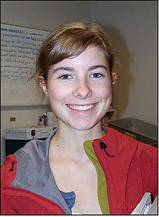
1:10 pm - Synthesis and Characterization of Dicarboximide-Functionalized Oxanobornyl Homopolymer and Diblock Copolymer
Kyle Posselt, Senior Capstone Seminar
Homopolymers and diblock copolymers of dicarboximide-functionalized oxanorbornyl monomers were synthesized using living polymerization conditions through a ring opening metathesis polymerization using a Grubbs third generation catalyst. The synthesis used two functionalized monomers with one having a diether side group and the other a phenyl side group. NMR analysis of the polymers demonstrated a cis to trans ratio ranging from 1.2:1 to 1.7:1. Gel permeation chromatography was used to measure molecular weight and polydispersity indices. The polymer’s polydispersities were found to be narrow with values of less than 1.07. The diblock copolymers gave two glass transition (Tg) temperatures corresponding to the blocks of the copolymers with the higher Tg block shifted to a lower value relative to the homopolymer due to the flexible nature of the low Tg block.
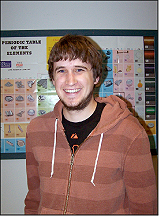
1:50 pm - Enzymatic Activities of Polymerase Pol ß and Pol ß-PAK from Trypanosoma brucei
Elizabeth Ezeb, Senior Capstone Seminar
Trypanosoma brucei is a protozoan parasite that multiplies in the gut of the tsetse fly and is transmitted to mammals causing African sleeping sickness. Unlike mammals, the mitochondria in T. brucei are made up of a network of mini and maxicircles called kinetoplast DNA (kDNA). Pol ß and pol ß-PAK are two of the multiple polymerases associated with the kDNA. Pol ß and pol ß-PAK have different locations in the mitochondria and are suspected of having different roles with respect to kDNA replication. Previous studies have indicated a 30% sequence match between pol ß and pol ß-PAK with the difference being a long sequence of proline, lysine, and alanine amino acids and a C-terminus attached to the pol ß domain. Additionally, these studies have concluded that the two enzymes seem to have different buffer conditions for optimal enzymatic activity. To investigate these matters, two domains – pol ß (from pol ß enzyme) and pol ß (from pol ß-PAK enzyme) were amplified, swapped, and then inserted into a pET14b (~4.7kb) plasmid, giving rise to transformed E. coli by the 6.9kb plasmid. These results indicate that the bacteria were successfully transformed with a plasmid that encodes for the newly altered enzyme.

3:40 pm - Keynote Speaker:
A 21st Century Biotechnology Toolbox
Dr. Randal Bass (PLU Alumnus, 1993), Amgen, Seattle, WA
Large protein-based therapeutics have proven to be effective treatments in inflammation, oncology and general medicine. The biotechnology industry has come through on delivering the promise of new and novel drugs, based on recombinant DNA technology. However, unlike their small molecule drug counterparts, protein therapeutics have a wide variety of forms, representing a significant challenge in producing them, and understanding what makes up the active drug. I’ll attempt to put some of the skills learned pursuing a chemistry or biology major into the context of large molecule drug development, and how some of those critical skills and learning can be translated.




Social Media